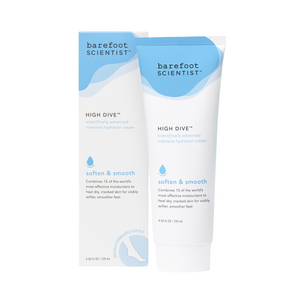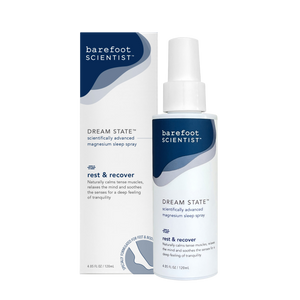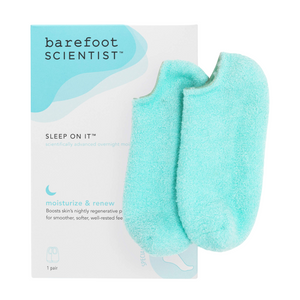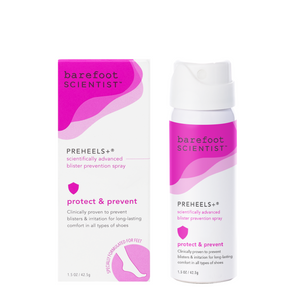How to choose the right running shoes
If you’re an avid runner or someone who wants to get started as a runner, finding the right running shoe for you is more important than you would think! A typical pair of running shoes last about 400-500 miles (that’s about three or four months for any running regulars), so it’s absolutely crucial that you’re supporting your feet for every mile you run. Here are the questions you need to figure out before buying a new pair of running shoes…
Where will you be running?
Whether you love running on the road, a trail, the beach or on the treadmill, the material of the ground you’re doing your runs on will help determine which type of sneaker is your best option.
Road-running shoes: When it comes to the road, you’re dealing with pavement and other surfaces that might have some bumps and cracks, so it’s important to take that into account. This style, in particular, will be flexible and light and will have smoother and flatter soles to account for that pavement and sidewalk.
Trail running shoes: These specific shoes are designed with tree roots, mud, rocks, gravel and other surprises from nature in mind. Sometimes including an underfoot plate (to protect your feet from sharp objects), these running shoes will have bigger cleats (and thus, better traction) than road running shoes and they’ll be stiffer for more support on those uneven trail surfaces.
Cross-training shoes: These shoes are designed for indoor workouts, including the treadmill (though you can certainly also wear road-running shoes on the tread, if you prefer), where you have a lot of floor contact. You can also wear these multi-tasking sneakers for other workouts and activities.
Do your running shoes actually fit?
It’s a common myth that shoes need a “breaking in” period – false, and especially when it comes to running shoes. A good rule of thumb for the perfect running shoe fit: if they’re uncomfortable the first time you put them on, don’t buy them/return them (if ordered online) because they likely won’t get any better. We also recommend making sure that you have about a thumbnail’s length of space between your big toe and the tip of the running shoe; you want them to be snug but not so tight that you can’t move your toes! Remember to always try on both shoes (with your favorite running socks) since most people have one foot that’s slightly larger than the other and you want to ensure a comfortable running shoe fit for both feet!
By the way, if you do get a surprise cut or blister from poor-fitting shoes, our Barefoot Scientist Rehab Scientifically Advanced Healing Serum uses 15 of the world’s most powerful healing agents to prevent infection and support the fast, healthy healing of minor cuts, scrapes and burns... or check out our PreHeels+ blister prevention spray to prevent the issue altogether.
How much cushioning do you need/want?
Also called “stack height,” running shoe cushioning is a personal preference and there are essentially three levels of cushioning to choose from:
Barefoot running shoes: You’ve probably seen these shoes before; they look a little weird to someone who isn’t familiar, and they are truly the closest you can be to actually being barefoot while still wearing a shoe. The cushioning is about 3-4mm and the shoe provides no stability or arch support. Let’s just say the internet and professionals alike have very strong opinions on the value of this style of shoe.
Minimum cushion running shoes: This level of cushioning is best for runners who really want to feel the connection to the ground beneath them but still want some arch support and stability (especially compared to barefoot running shoes).
Moderate cushion running shoes: A nice balance between a thin cushion and a pillowy/cloud-like cushion, this level of cushioning is popular and available in many running shoe styles and brands.
Maximum cushion running shoes: For anyone who wants the most cushion support, maximum is for you. These running shoes will give you a thicker, foam-like underfoot and will feel quite bouncy when you’re running in them.
What’s your pronation type?
Aside from cushioning, there are also different levels of running shoe support that you need to consider, based on your biomechanics, and especially your pronation level. There are three types of pronation (aka the natural way your foot rolls in, out or straight when your foot hits the ground):
Basic pronation: This is when the foot rolls inward a standard amount, which happens to help relieve pressure on joints and knees and also helps absorb impact.
Overpronation: Serious injuries can occur when the foot is overpronated and excessively rolls inward. Typically, experts would recommend stability or motion control shoes for this pronation type.
Supination: Not many runners supinate (aka the foot rolls outward when it hits the ground), but those who do will want to wear a running shoe with maximum cushion and flexibility in order to help prevent injuries.
Here’s how to determine your pronation level.¹
How much support do you want/need?
Now that you know your pronation type, you can determine how much actual support you need in a running shoe, and there are three types: motion control (high support), stability and neutral.
Motion control running shoes: The most stable of the running shoe, these are best for runners who display moderate to severe overpronation. You will get a stiffer heel and/or denser foam cushioning for maximum support and control.
Stability running shoes: Though not as stiff as motion control running shoes, stability running shoes also have the ability to help control pronation and are good for runners who show mild to moderate overpronation.
Neutral running shoes: Neutral running shoes are best for neutral runners (aka runners who supinate), but this style can also be worn by mild pronators.
Now that you’re all ready to buy a perfectly-fitting pair of running shoes, don’t forget to also stock up on our Barefoot Scientist Twinkle Toes Deodorizing Purification Spray, the ultimate odor-eliminating, bacteria-killing, foot-freshening super spray. Twinkle Toes uses six powerful anti-microbial agents to instantly wipe out the bacteria and fungus that cause funky shoe odors (especially in shoes you run in!), plus you can also use it directly on your feet and socks after a long run to eliminate 99.8% of odor-causing bacteria. #FeetFreshAsADaisy
- 1.




